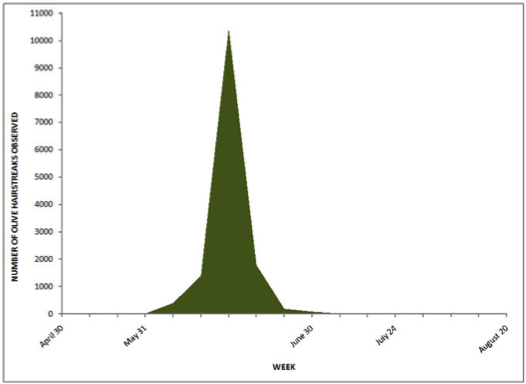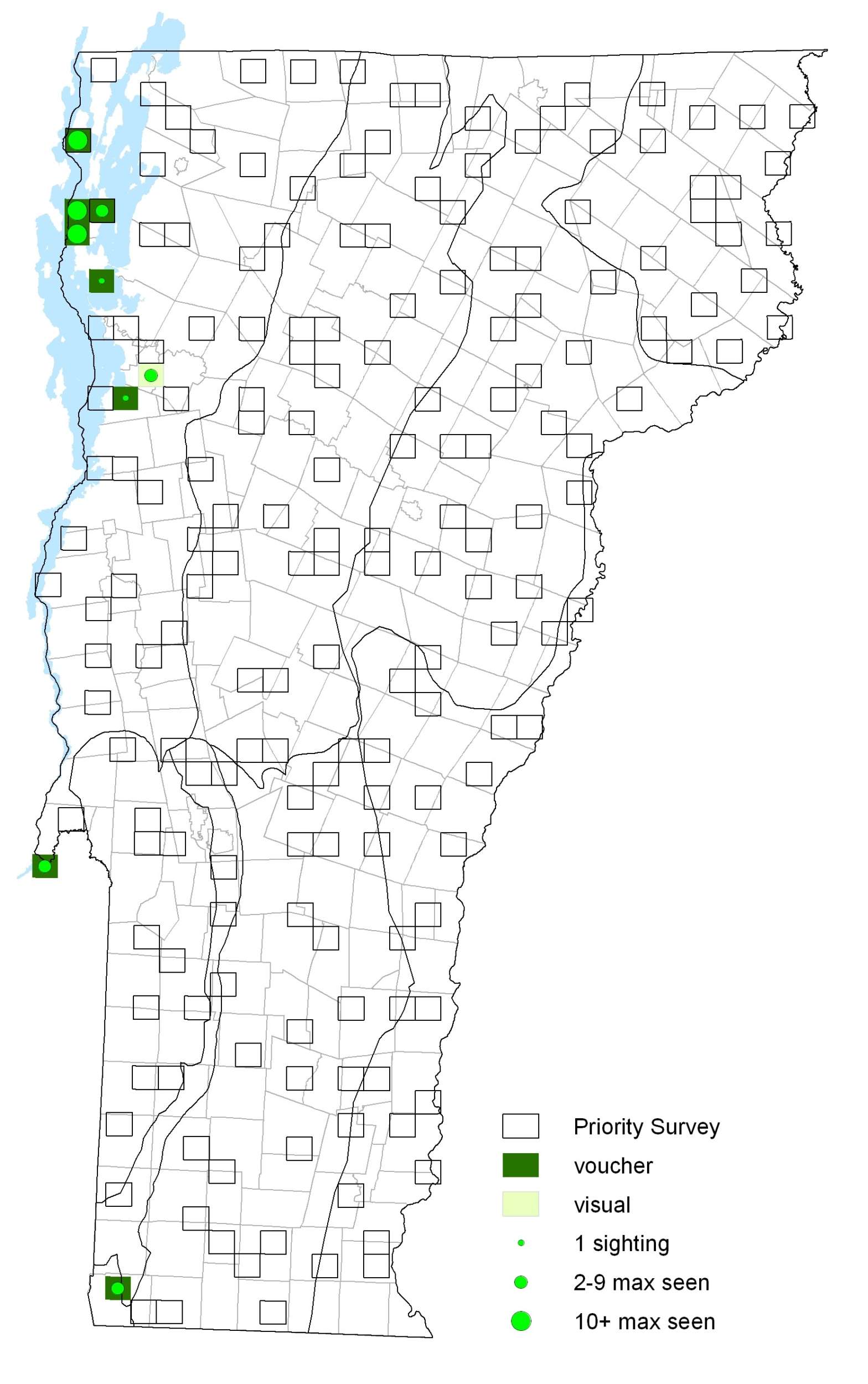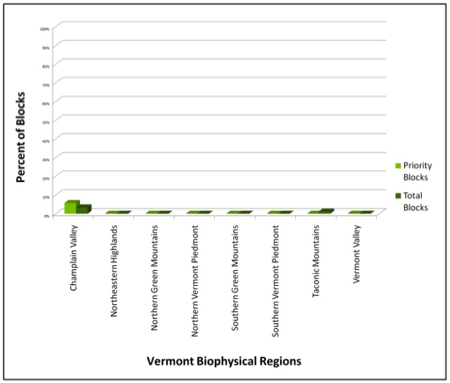|
Resident Conservation Status North American Range |
Recently combined with other western taxa of the genus Mitoura. Formerly widely known as the Olive Hairstreak. A small, jewel toned butterfly with long hindwing tails, the Juniper Hairstreak, though relatively common, is extremely local. Males perch on host trees and tend to be highly territorial, very active, and will pursue females throughout the day. Eggs are laid singly on the tips of host plant leaves, which the caterpillars eat. Pupae overwinter. One way to find this butterfly is to gently jiggle cedar trees while watching the tops for them to fly. They usually return to their perch soon after being gently disturbed
Identification
Variable markings and coloration across its range. Western and eastern populations were once considered separate species. Eastern: Upperside of male dark brown with olive-colored sheen, female blackish brown. Underside green; forewing with tawny base, hindwing with two white spots near base and irregular white line edged inwardly with red-brown.
Flight
Two flight periods in Vermont with the bulk of the first cohort in June and the second and much smaller flight beginning in July and lasting through the 3rd week of August. Similar in Massachusetts, but no second flight known for Quebec (Hanfield 1999). Hyper-abundant in some locations during spring flight. Extreme dates: 30 April 2004 in West Haven (B. Pfieffer) and 20 August 2002 in Grand Isle (D. Hoag).
Distribution and Habitat
Extremely local, but widespread in the United States. Found to be locally common in extreme western Vermont in old fields colonized by Eastern Red Cedar (Juniperus virginiana). One historic record for Conneticut River valley in North Hartland (1 August 1902). Adults nectar from various flowers such as milkweeds (Asclepias), dogbane (Apocynum), and White Clover (Trifolium repens). The only caterpillar host in our region is Eastern Red Cedar.







